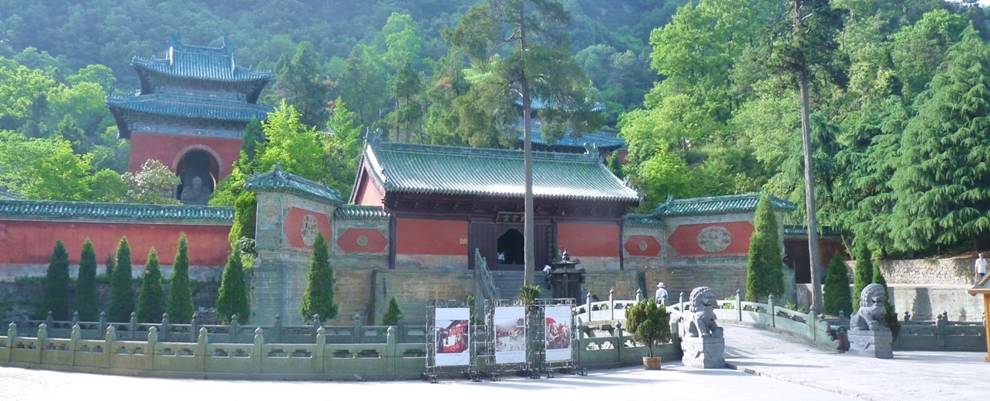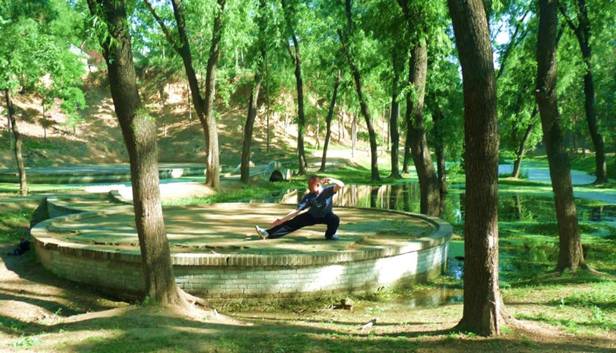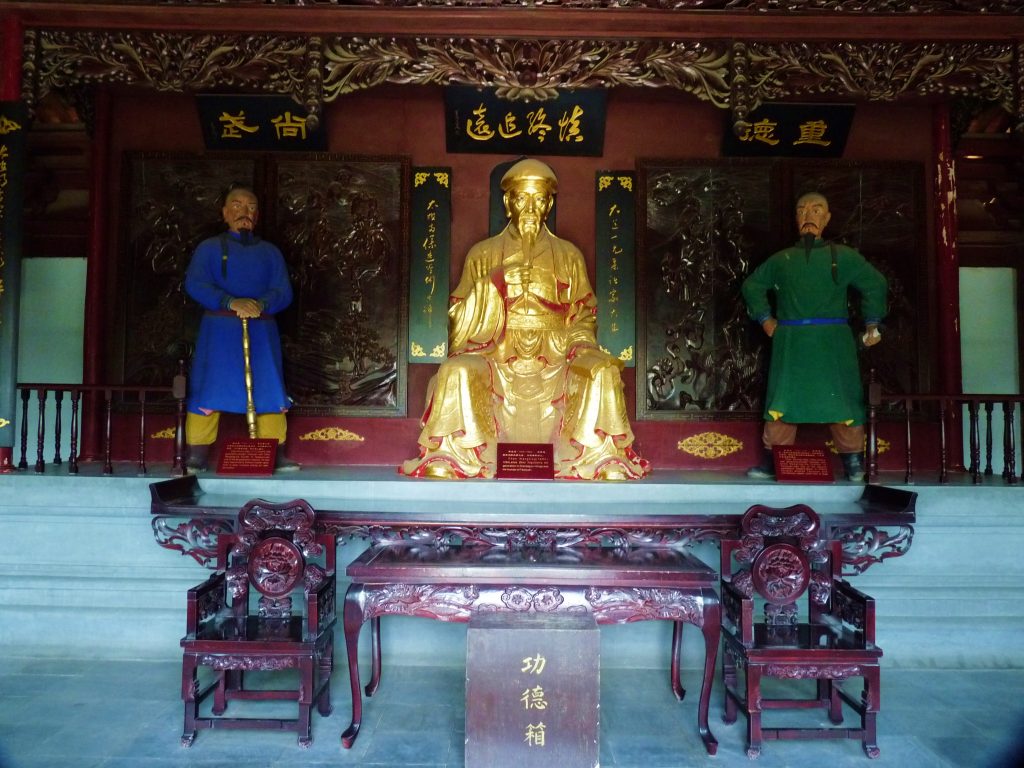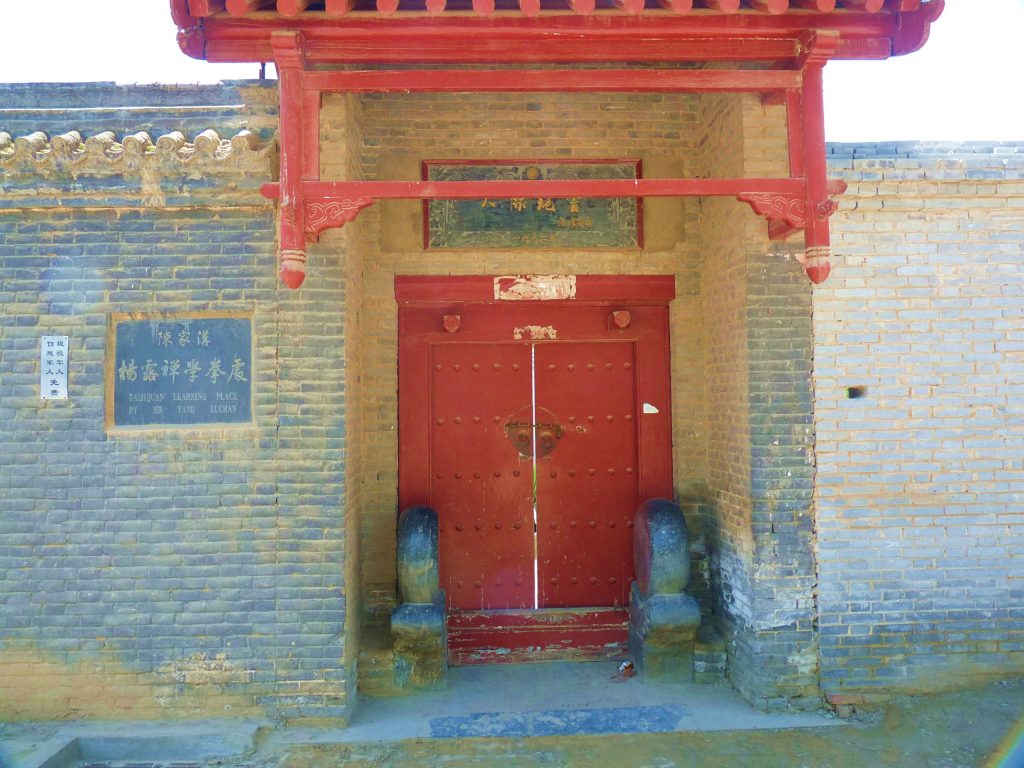History of Tai Chi
To this day, there are two major beliefs on the origin of tai chi. The more “mythical” of which is that tai chi was created by a Taoist priest, Zhang sanfeng, who lived during the Yuan and Ming Dynasty (late 1200s to mid 1600s AD) on Wudangshan, Hubei. He supposedly created the forms after watching the battle between a snake and a crane. The round movements of the snake made him a worthy opponent to the crane and from this observation, Zhang sanfeng created the martial art with round movements.

Chen Style
The other belief, dates tai chi to be about 400 years old or so, and originates from a place called Chenjiagou (also known as Chen Village). Unlike the Zhang sanfeng story, there is written evidence and records to support its history.
Chenjiagou is a small village located in Wen County. When I had the privilege of training in Chenjiagou, it was about a three hour bus ride from Zhengzhou.


In the late 1600s, a retiring military general, by the name of Chen wangting returned to Chenjiagou and created what we now call Chen style tai chi. At that point in time, he created what’s known as laojia or “old frame”. Since then, the Chen family has been very creative and came up with some beautiful modifications to the form (e.g., xinjia, xiaojia).
Yang Style
The founder of the Yang style, Yang Lu Chan, was a servant in the Chen family. In the evening, he would secretly watch the Chen family practice their art and learn. When he was discovered by the Chen family that he was spying on them, the family could have very easily killed him, but upon discovering that his tai chi calibre was high, they took him on as an “outdoor” student. Eventually he developed his own style (now known as the Yang Style) which is quite different from the Chen Style with higher stances coordinated with slower and graceful movements. Yang did a lot of traveling around China, which would explain why the style is so popular today. He became so well known that the Emperor asked him to teach his style to the guards in the capital.

Wu (Hao) Style
Wu Yu-Xiang studied both the Yang and Chen style and in the late 1800s he developed his own Wu Style. It is not a very common form but its style is characterized by using a lot of internal power.
Wu Style
This is a relatively recent style and was created by a father-son team (Wu quanyu and Wu jianquan) in the early 1900s. This form is characterized by a forward leaning posture and much higher stances than the Yang style. The current name bearer of the Wu style is Hong Kong’s Master Eddie Wu, who was formerly based in Toronto. He must be one of my favourite tai chi speakers – very lively, pragmatic, and funny!
Sun Style
Of the five major tai chi families, the Sun style is the youngest. The founder, Sun lutang was a master in Xingyi and Bagua quan and was taught tai chi by one of the masters of the Wu style. Sun lutang later incorporated elements of Xingyi and Bagua into the form and later called it the Sun Style. That is why when you compare the Wu style and the Sun style there are so many similarities. One of the most prominent characteristics of the Sun style is the liveliness of the steps and its high stances. The feet are seldom far from each other.
My teacher, Troyce Thome, co-wrote a very good book on Sun style tai chi: Traditional Sun Style Taijiquan
National Combined Routines
As the demand for shorter and easier to learn routines is ever increasing, China created some forms which has taken elements from each of the five major families and combined them into new forms. One of the first forms created was the 24-Forms Tai Chi (in 1950s) which is comprised mainly of Yang style forms. The 48-Forms was created a couple of decades later as a competition style. But the level of difficulty of this form was not high enough so a more difficult form was created – the 42 Form. The Yang style has also been standardized to what is now known as the 88-Form. This form was created at about the same time as the 24 forms and is not much different from the old traditional “long” form except that there are a couple of added forms to smooth out some transitions between forms. More recently, several new styles have appeared in the market. These include the 16-Form and the 8-Form. These styles are much simpler to learn because of the low number of forms and are designed to exercise both sides of the body (whereas some of the more traditional forms practiced only on the right side) and the other advantage is that there is not as big of a requirement for space. Many of us would practice more often if we have the space.
Tai Chi Theory
Why Tai Chi?
So why is this particular martial art called “tai chi”? The origin of the name has a Taoist connection. When we think of the yin-yang, there’s equal yin as there is yang within a circle. The yin-yang represents polar opposites such as male/female, light/dark, strong/weak. Remember that the term “tai chi” translates to be the “extreme ultimate”. The Taoist call the yin-yang “tai chi” because in nature, the tai chi symbol arises from a disordered state called “wuji”. However, Nature sorts herself out to yield the extreme poles of yin and yang.
When we start tai chi, our feet are together and there are no thoughts. This represents the state of wuji. Then when we start, we separate our feet and start the intention of movement. This is the start of tai chi since the yin and yang are being defined by our steps and body movement.
![MC900156553[1]](http://www.horaceluong.com/taichi/why_files/image011.gif)
When we examine the yin-yang, we notice that there is continual transition from yin to yang and vice versa. If we run any line from the edge of the circle through the center to the opposite side, at no point can we get only yang or only yin. There will always be a bit of contamination by the other. This is also represented by the smaller circles within each side. The significance of these observations for tai chi is that we want to achieve balance. Whether it is for martial art purposes by neutralizing a strong opponent, or for health with relieving mental stress (yang), the soft movements in tai chi can be used to restore balance.
The Body in Tai Chi
Physiology
All joints are kept loose in tai chi. The feet root the body and then the waist pushes the shoulder which then guides the elbow and then finally the wrist and fingers. Make sure that the hands don’t move faster than the body. As well, while practicing the form, don’t maximize the extensions. Remember in the theory that there’s always a bit of yin in yang.
Respiration
At the beginner level, we want to aim breathing to be long, deep and slow – regardless of speed of movement. To some extent breathing may correspond to movement but it doesn’t always workout so it is best to just avoid the correlation and worry about breathing naturally. When breathing, let your abdominal muscles expand and contract as opposed to the chest.
Qi or Chi
Qi or Chi is the term tai chi enthusiasts use for energy. The “chi” in tai chi and “chi” when we refer to energy have very different meaning and are different characters. It’s more appropriate to call “tai chi”, “taiji” since that’s the more correct pronunciation. Chi, for energy, is pronounced just as it is written (“chee”).
Qi will flow within the body with the aid of intent and blood.
Inhaling brings qi into the body while exhaling serves to deliver force.
Back
Keep the back upright so that the energy can flow continuously and without obstruction.
Dan Tien (Energy Well)
The Dan Tien is located about three finger spacings below the navel and inside the body. Regardless of style, the Dan tien is believed to be the place where chi is stored. When we practice, we want to be mindful of this area and therefore we sink our energy to this reservoir. The goal in tai chi practice is to collect as much qi as possible.
The Essential Tai Chi Principles
At the core of the tai chi theory are roughly ten essential tai chi principles. The compliance of these principles is what differentiates tai chi from the other martial arts. When we practice, we want to unite the mind/intent with chi and physical movement. Remember that intent drives chi and chi delivers force. Despite the physical differences between styles, all styles adopt these principles.
1. Move slowly and continuously
Be like water flowing in a river.
2. Practice with dynamic resistance
As we practice, imagine that there is resistance in air and how your body will respond to the resistance. This is the act of using your mind and intent to guide the chi.
3. Differentiate between full and empty (steps in particular)
4. Keep an upright posture
5. Keep all joints loose and relax the waist
The waist is the origin of power and movement direction. The lower body must be used to generate stability which can only be achieved when the waist is relaxed.
6. Sink shoulders and drop elbows
The sinking of shoulders will help lower your sense of your centre of gravity and allow the chi to flow more continuously. Keeping the elbows low is good practice because they become less susceptible to being controlled by an opponent.
7. Relax chest and round back
By pulling the chest in, rounding the back, chi can sink easily to the Dan Tien.
8. Sink chi to Dan Tien
9. Find stillness within movement
Movement and stillness are yang and yin. Stillness can be used to conquer movement and even in stillness, there is movement. Why do we practice tai chi slowly? So that we can achieve “stillness”! It’s also much more difficult to do it slowly since it takes muscles and patience. Go ahead, give it a try!
10. The whole body should move in synchrony
The 13 Postures
In an article written by Taoist priest Zhang sanfeng, called “Tai Chi Chuan Treatise”, states that there are 13 postures used to create tai chi (regardless of style).
- Upper body
- Peng (Ward-off)
- Lu (Roll back)
- Ji (Press)
- An (Push)
- Tsai (Grab)
- Lieh (Split)
- Zhou (Elbow strike)
- Kao (Shoulder bump)
- Lower body
- Jin bu (advance step)
- Tui bu (retreat step)
- Zuo gu (awareness of the left
- You pan (look to the right)
- Zhong ding (central equilibrium)